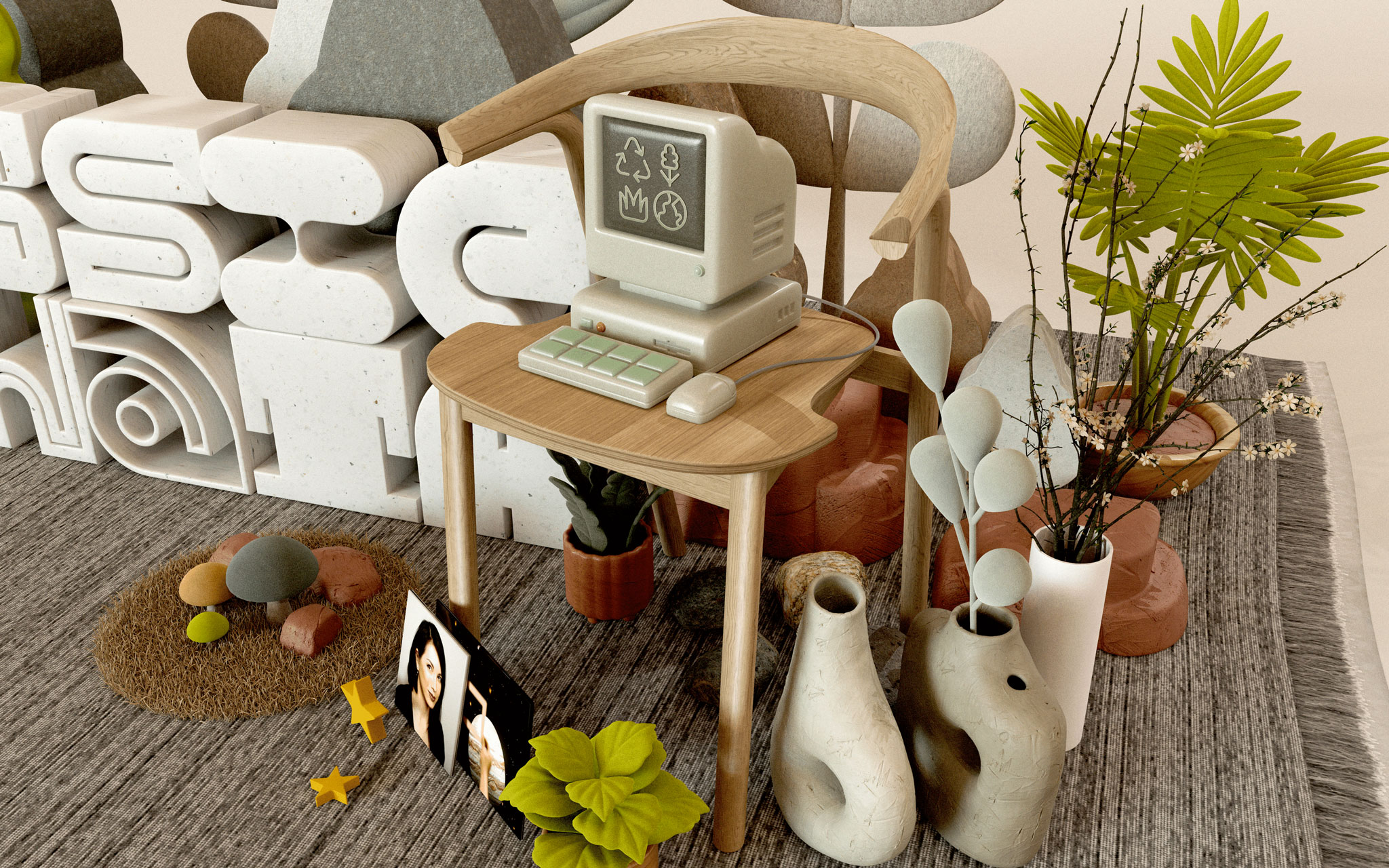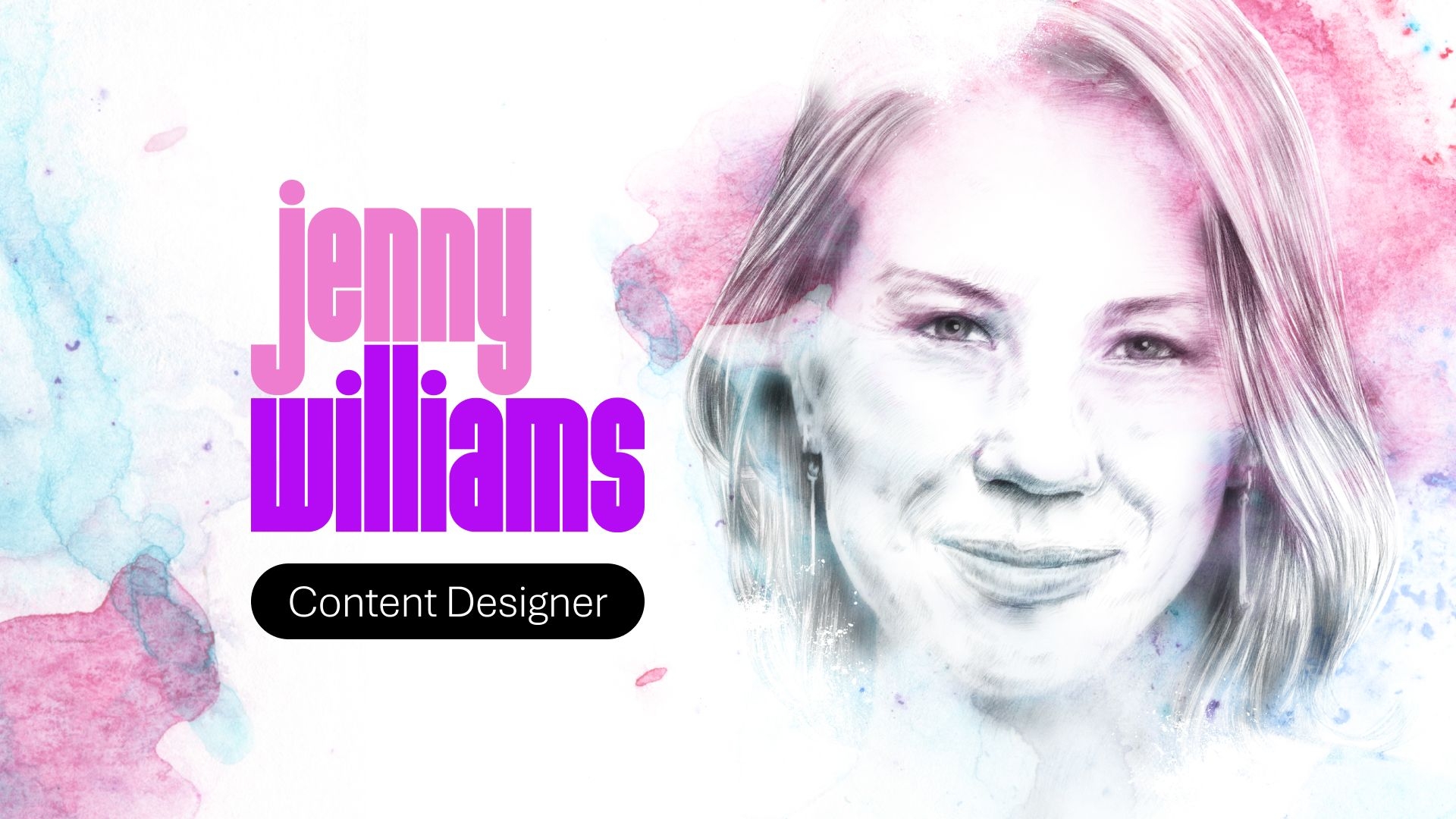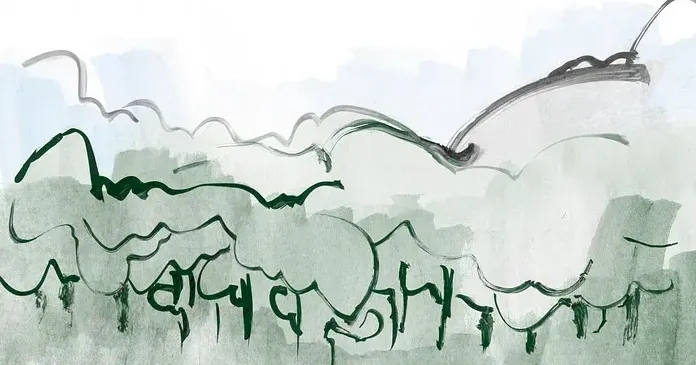Design as an earthling
Connecting the outer worlds of our environment to the inner world of self

“Let’s gather pinecones and throw them in. It’s a bit chilly,” said Grandma Sunbeam, an Indigenous leader from the Sonoran Desert. It was a beautiful morning, and I was on a ranch in a forest. My senses were heightened by the sound of the wind through the trees, the chirping of birds, and the aroma of burning pinecones as sap crackled in the campfire. With a cane in her hand and a beautifully patterned native shawl wrapped around her shoulders, Grandma Sunbeam set up a comfortable space for us to sit and talk.
A week before starting my new role as Director of Design for Sustainability at Microsoft, I had the honor of spending a weekend with Indigenous leaders at an event centered around human connection to nature. These leaders came from across the world, from the United States to the mountains of Peru and the remote jungles of Brazil and Colombia.
Grandma Sunbeam and I were sitting across from each other with our knees touching. She held my hand in her lap. There was something about my inner world or the way that I was feeling inside that needed healing. A few hours and many tears later, we uncovered a lot. I mentioned to her my upcoming transition to a new role in sustainability and before I elaborated on responsibilities, she stopped me: “Jessie, if there was one thing you take away from this weekend, it’s that it’s not only about sustainability. It’s about reciprocity to the Earth with equity.”
Her deep words and perspective shook me to my core. Reciprocity in the context of nature in Native American and Indigenous cultures is a way of life. It is about a mutual exchange between all beings from the past, present, and future. Through this perspective, we are all interconnected to other beings on this planet, an intricately woven web of balanced energy. The human species has already taken so much from this planet; therefore, an equitable mindset is necessary to achieve equilibrium.
I carried this sentiment with me as I began my new role at Microsoft. I realized that connecting to nature requires people to see the unseen—to look beyond the physical reality that surrounds us. Seeing a product’s past, present, and future is a multi-sensorial and imaginative experience of sounds and visuals that tell the product’s life story, from the biodiversity it inhabited, to material extraction and manufacturing processes, to visioning the landfills it might end up in.
Our path to sustainable transformation lies in connecting the outer worlds of our environment to the inner world of self or what needs to heal within. In the words of Indigenous author Robin Wall Kimmerer in Braiding Sweetgrass, “As we work to heal the Earth, the Earth heals us.” Only through these relationships can we understand what it means to have empathy for the Earth because by saving the planet, we are saving ourselves.
As we work to heal the Earth, the Earth heals us.

Shifting paradigms
In 2020, Microsoft announced our bold climate goals of being carbon negative, water positive, having zero waste, and helping to protect our ecosystems by 2030. The scientific community concluded that if we do not curb carbon emissions by the end of the decade, the consequences will be catastrophic. Microsoft has made great progress in reducing carbon and waste since then. These initiatives include more reusable materials, increased repairability, and energy-efficient Surface devices, Xbox Remix controllers made of recycled and reclaimed materials, and the Microsoft Ocean Plastic Mouse.
However, as we look to accelerate towards 2030, we need great paradigm shifts in thinking about the products we make. More importantly, we need to rethink the approach and mindsets we adopt as product makers.
In late 2022, Brad Smith, Vice Chair and President of Microsoft published an external report titled, “Closing the Sustainability Gap.” The report was a means to close the gap in the sustainability workforce and help companies accelerate from pledge to progress. I took this as a personal call-to-action. A design leader at Microsoft whose primary role was to insert sustainable design thinking into early innovation processes did not exist prior to creating my role. I knew this was an opportunity to jumpstart something new, to explore a new frontier – a process that I have been pursuing since the beginning of my career.
Inner space to outer space
In 2011, as one of the first full-time designers at NASA’s (National Aeronautics and Space Administration) Jet Propulsion Laboratory (JPL), it was inevitable that most scientists and engineers did not understand the true value and power of design, let alone the need to connect outer space to humanity. After years of applying basic art and design value to the concept of space exploration, I started the first in-house product design studio the agency has ever had. We worked on everything from spacecraft design for Venus, to the Mars helicopter, to robotic design for Jupiter’s moon, and we even ended up with grants to incubate our own mission ideas.
However, making cultural changes where design was seen as a part of NASA’s mission strategy was not an easy feat. Posing the question of “why” in the context of space exploration is usually a scientific question or a hypothesis. I discovered that design could humanize “why” and empower NASA to problem-solve more creatively and efficiently. NASA JPL could engineer missions to be relevant to humanity and society from the get-go, not just as an afterthought. Existential connection of the outer worlds of space to the inner worlds of how we feel, go about our day-to-day, and understand our place in this world was valuable to securing funds from Congress and other stakeholders; including product design thinking at the big table of mission design was in fact strategic. Space exploration is as much a quest for our innate place in this solar system as a quest for science.
People traveled across the country chasing the 2024 solar eclipse for a few minutes of visceral awe of our cosmic interconnection. Yet every minute of our day we can have a similar cosmic feeling if we just walk outside and look up at the sky. It is easy to forget that we live on a planet in a solar system, in a galaxy, and in a Universe within a multiverse. The rhythms of our bodies are guided by celestial bodies. The solar eclipse pulled together millions of people across the United States because our attraction to the sun, moon, and stars is inherent, like the pull of intrinsic belonging, all interconnected. As Neil DeGrasse Tyson likes to say, “We are all made of stardust.”


Cyclical journeys
Indigenous peoples have been trying to make sense of their inner connection to outer worlds beyond their own for tens of thousands of years. In Native American culture, the circle is a sacred symbol and represents a medicine wheel, or the cycle of life from birth to death to rebirth. The symbol can range from representing objects in space to the concept of continuity and consciousness. In sustainability, the circle represents a circular economy and eliminates waste by reusing, repairing, remanufacturing, and recycling to create a closed-loop system. Most goods in our world have a linear lifecycle and are made with virgin material that gets mined or harvested from non-renewable resources, that eventually ends up in landfills.
Like Microsoft, companies are on their way to creating better circular supply chains and more ethical working conditions. Investing in more sustainable materials and suppliers will help get companies to a baseline, but it may not be transformative enough to achieve our goals in 2030. A circular economy can help accelerate progress towards these goals. If cyclical, a product journey starts with a recycled material, and hopefully ends in a recycling bin. Since a product cannot put itself into the recycling bin, sustainable design thinking can help enable circular behavior by understanding how the journey of a person and a product connects within the context of environmental impact. At the end of the day, we are not just designing an ecosystem of technology. We are designing within an actual ecosystem.
Elevating earth’s voice
I believe that the biggest design movement of our generation is not only designing for the era of artificial intelligence, but rather, designing for how we mitigate climate change. Creating paradigm shifts in how we design and how our users consume are critical to sustainable transformation and moving the needle towards creating better harmony with our planet. Shifting the perspective from putting humans at the center of our experiences to understanding humans as a part of a vast ecological system of relationships is imperative to this shift.
Let us use sustainable principles like repairability upfront, as a creative sandbox instead of limitations to innovation. Let us be inspired by nature and use biomimicry to solve compelling problems. Let us co-create with our Indigenous, native, and marginalized communities. Let us start by seeing products as journeys of where they start from and where they end up, in addition to their form or function.
Designing with “reciprocity for the Earth with equity” is more than just the mutual exchange with the planet in which corporations often plant trees or try to replenish ecosystems. It is about equitably elevating the ‘voice’ of Earth during the initial stages of the design process, treating Earth as a core stakeholder in innovation, and building systemic empathy for the unseen: interconnected parts that make up an ecological system including you and your own inner Earthling world.
*Some names, locations, and identifying characteristics have been changed to protect the privacy of those depicted
Read more
To stay in the know with Microsoft Design, follow us on Twitter and Instagram, or join our Windows or Office Insider program. And if you are interested in working with us at Microsoft, head over to aka.ms/DesignCareers.

A canvas of community narratives
Xbox celebrates a year of visual storytelling by launching new dynamic backgrounds

In the age of AI, will content designers become extinct?
Senior Content Designer Jenny Williams talks about her role, and working with AI

Leave no trace
How product designers can break from the status quo and help our planet
